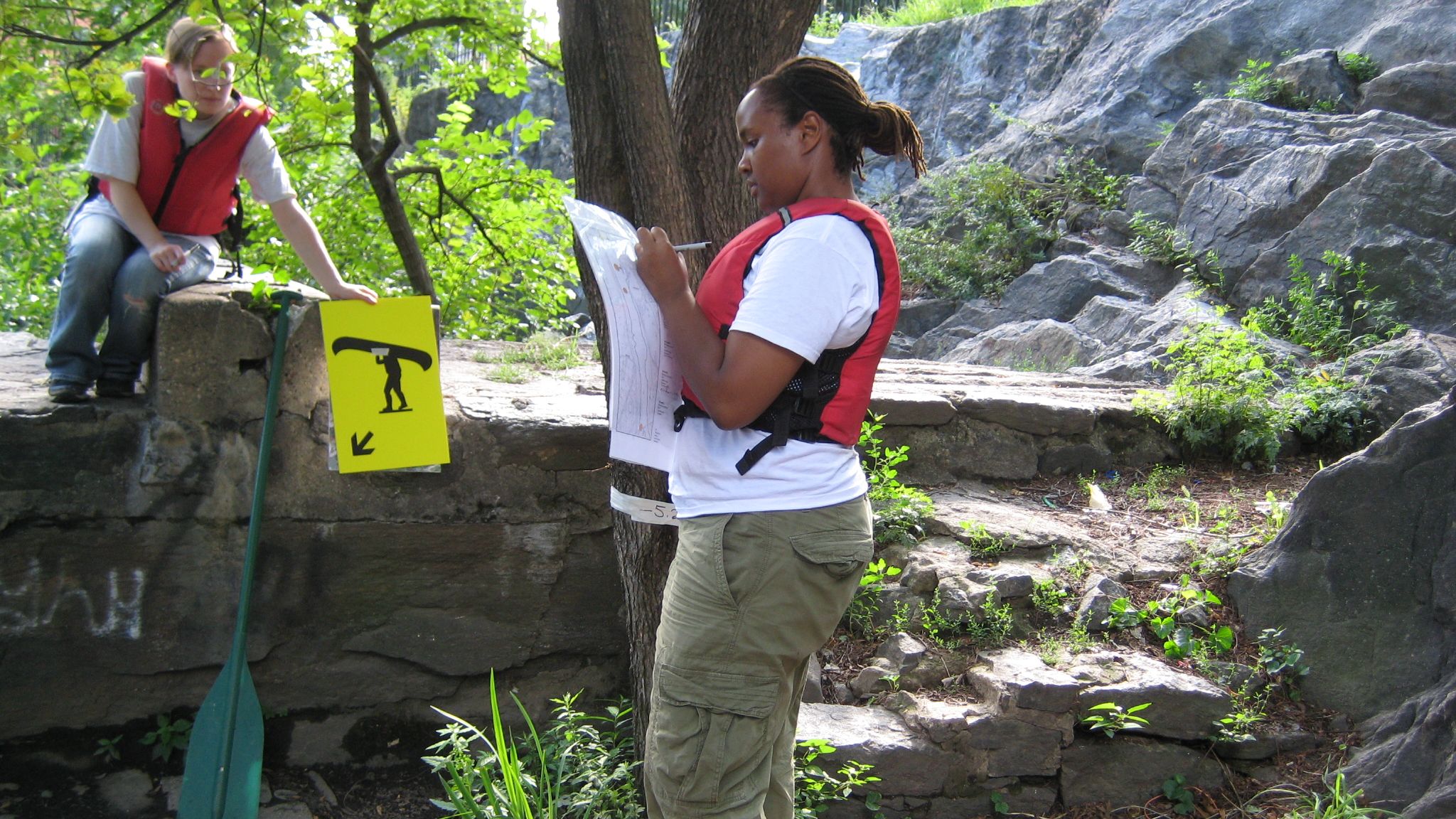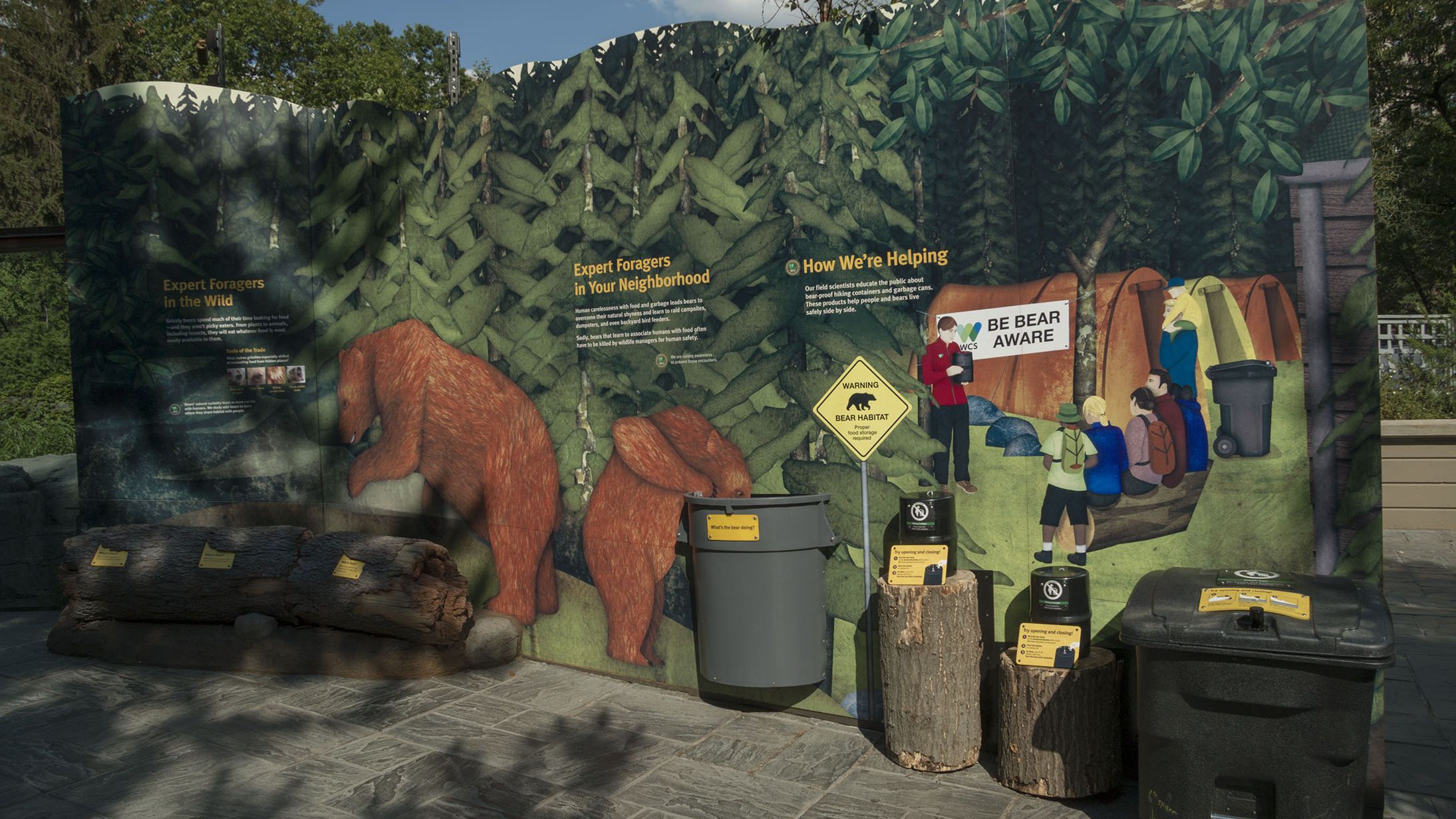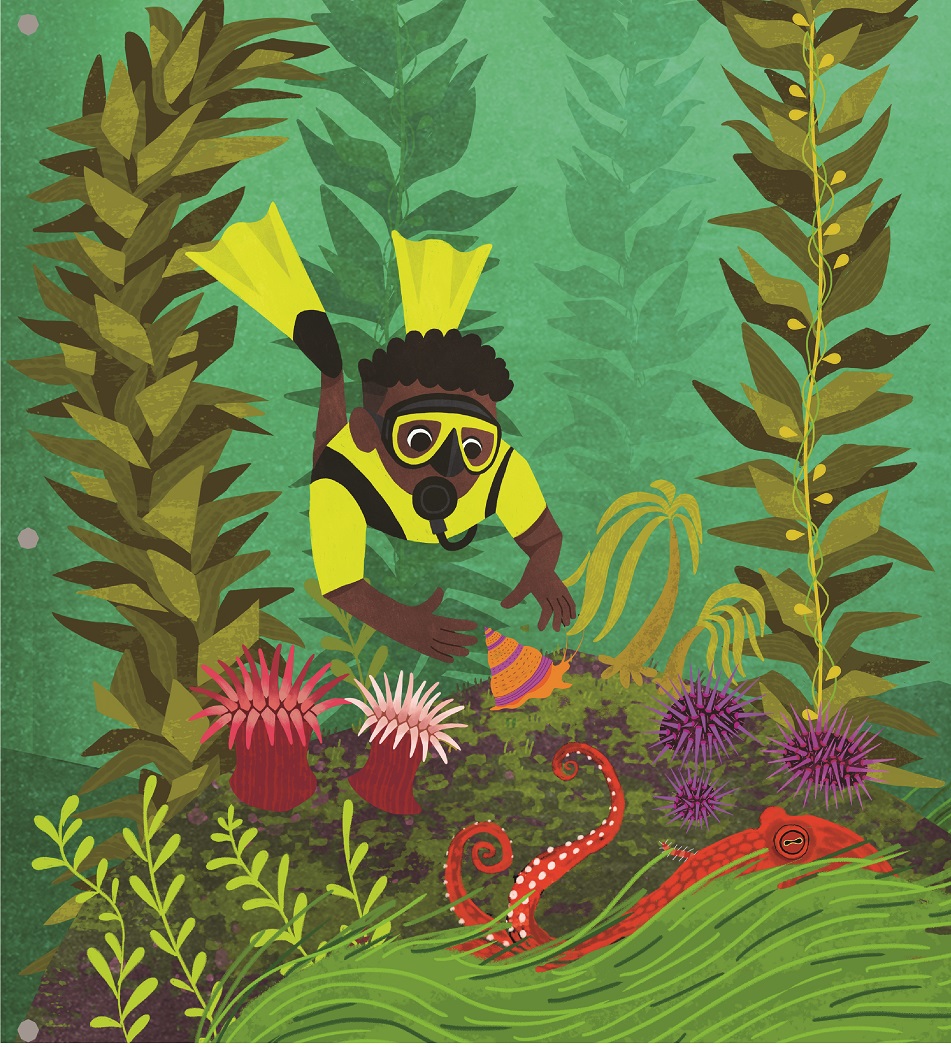
Jennifer Dolland, Assistant Studio Manager & Senior Graphic Designer, Wildlife Conservation Society. Photo courtesy of Jennifer Dolland.
I’ve always had a passion for the arts and math. As a child, I loved to draw. As I got older, my “creative” expression expanded to working on home improvement projects with my parents: installing laminate woods floors and kitchen backsplash, decorative wall painting, and refurbishing furniture. With these projects, I got to utilize my math skills—measuring, cutting, and spatial visualization—and I discovered I enjoyed using my creativity to transform spaces.
My degrees in Psychology (UW-Madison) and Display & Exhibit Design (Fashion Institute of Technology) contributed to my work as a visual merchandiser in trade show and retail spaces. I observed how creating impactful displays motivated customers towards making a purchase. I learned the impact of creating and adapting a message or environment to successfully connect with an audience.
A major breakthrough in my career was landing a summer internship as a graphic designer in the Wildlife Conservation Society’s Exhibit and Graphic Arts Department (EGAD). Based at the Bronx Zoo, EGAD is responsible for the design and construction of exhibits as well as other design projects at the Bronx Zoo, Central Park Zoo, Prospect Park Zoo, Queens Zoo, and New York Aquarium.

Wildlife Conservation Society worked with the Bronx River Alliance to design, locate, and install signs along the Bronx River. The signs help direct paddlers to the canoe portage location, warn paddlers about the waterfall, and provide information about the animals that live on the Bronx River. Photo courtesy of the WCS Exhibition & Graphic Arts Department (EGAD).
As a Minnesota native, I grew up seeing deer, wild turkey, and the occasional American marten in my neighborhood. You’d ski or sled during the winter and visit one of our 10,000+ lakes during the summer. So working at the Bronx Zoo and being immersed in nature has made my workplace feel like a home away from home.
Through the years, I’ve had the opportunity to design graphics for various needs: park events, retail, wayfinding, and exhibits. In my current role as the Assistant Studio Manager & Senior Graphic Designer, my responsibilities have expanded to assisting with project management and production.
I’ve benefitted from collaborating and learning from a group of smart and talented individuals including other graphic designers, writers, architects, landscape designers, fabricators, and production specialists.
Collectively, we’re committed to creating immersive experiences with the goal of connecting our visitors to nature and fostering a love of wildlife and wild places. Through design, we transport our visitors to different locales and habitats using soundscapes, wall murals, and landscape design.

The Central Park Zoo’s grizzly bear exhibit features a bear proof trash can. Photo courtesy of the WCS Exhibition & Graphic Arts Department (EGAD).
We blur the line between the animal and visitor space through exhibit elements, like a rocky outcrop or plantings, that span both spaces – making our visitors feel like they are a part of the animal’s space. Our strategic placement of signage, 3D objects, and interactives help us communicate important messages to our guests. Seeing our visitors connect and engage with our exhibits, and then share their learning with others is always rewarding.
A recent favorite project is the PlayQuarium exhibit at the New York Aquarium. It’s a bilingual, immersive playspace that introduces kids to different ocean habitats and sea life. Through different tactics, children are encouraged to take on the role of animal or explorer as they journey through the open ocean, coral reef, kelp forest, rocky shore, and salt marsh.

The design team reviewing full size illustrations for the PlayQuarium exhibit. To create an immersive, real-world conditions, it was important the animal illustrations were life size. Photo courtesy of the WCS Exhibition & Graphic Arts Department (EGAD).
During the early development of the exhibit, I reflected on my childhood. I vividly remember my second grade class making Santas. My teacher, Mrs. Hayes, offered me brown construction paper so I could make a brown Santa. Unable to articulate it at the time, I felt seen. Later, I felt deflated after a classmate said my brown Santa appeared like he just came down the chimney.
That early experience, coupled with others—like the “nude” Crayon not representing my skin color—made me aware at a young age that my racial identity was not considered the standard or norm. These childhood experiences influence the lens through which I design. It’s important to see inclusive representation reflected in our parks to connect with our global diverse audience.

One of the final illustrations used in the PlayQuarium exhibit. The illustrations encourage kids to take on the role of an animal or explorer as they visit different underwater habitats. Photo courtesy of the WCS Exhibition & Graphic Arts Department (EGAD).
As we celebrate Black History Month, I hope exhibits like PlayQuarium resonate with young brown and black kids—that they will see themselves as conservationists and feel empowered to be advocates for wildlife and wild places.
